Get ready for a tasty ride as we show you how to whip up a delicious Gochujang Sauce that will add some serious OOMPH to your favorite Asian dishes. Spicy, sweet, and tangy – it’s going to be your new cooking obsession!
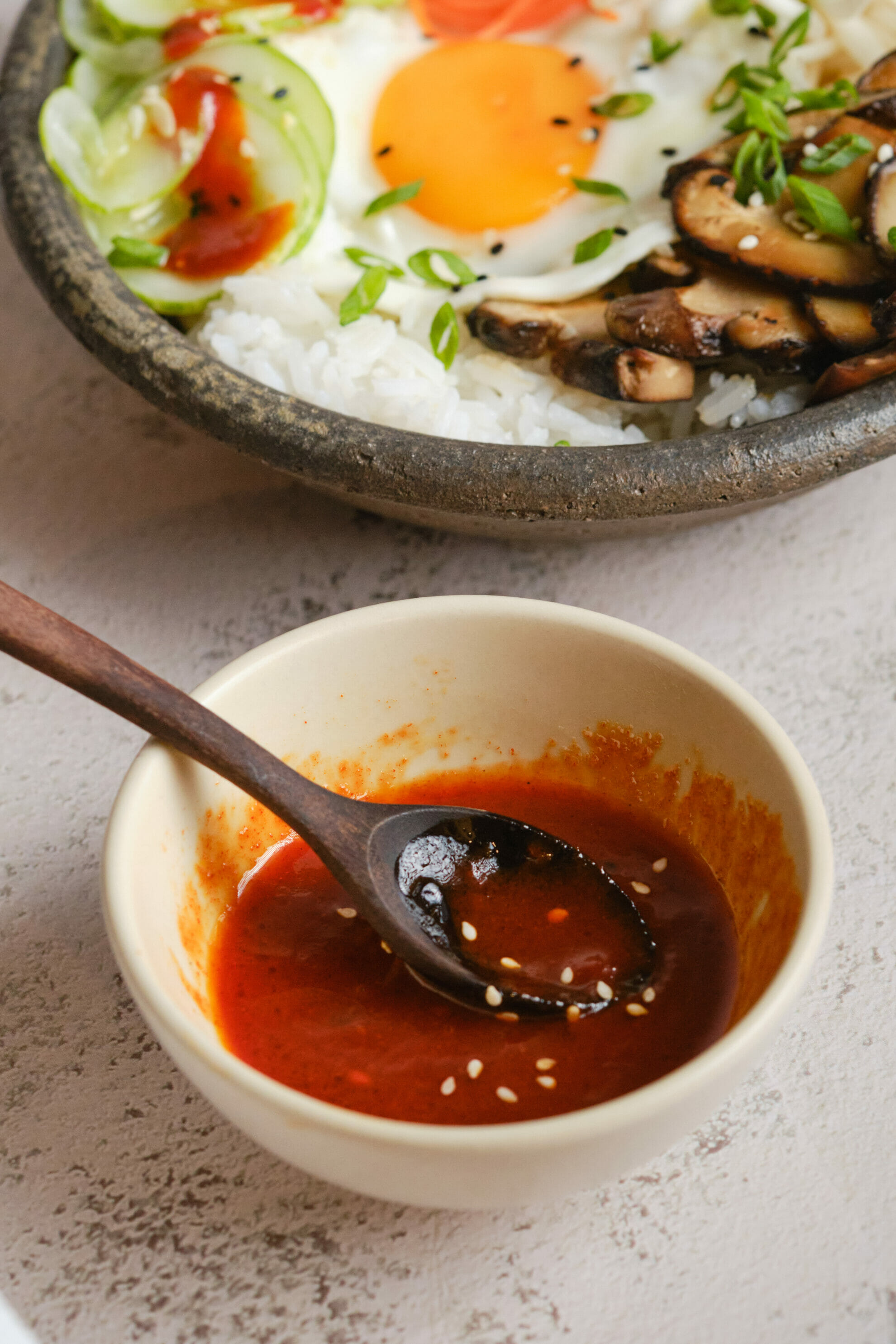
Craving some serious flavor in your life? Aren’t we all. That’s why it’s time to spread the word on Gochujang Sauce! This superstar, which has been a staple of Korean kitchens for ages, has taken the food scene by storm, winning over taste buds everywhere. With the ultimate mix of sweet, spicy, and savory, it’s perfect for adventurous eaters and upgrading classic recipes.
You might think it’s kind of like sriracha or sweet chili sauce, but don’t be fooled! Gochujang sauce is in a league of its own, thanks to the fabulous gochujang paste that gives it that can’t-get-enough unique flavor.
This recipe brings out the best in gochujang paste and pairs it with some seriously yummy additions. All you need are a few steps and a handful of ingredients to whip up this must-try sauce.
Why You Will Love This Recipe
- It goes incredibly well on bibimbap. What is bibimbap, you ask? Well, conveniently enough, I’ve got a recipe for just that dish.
- Gochujang has a rich and complex flavor, which makes it perfect for Korean dishes.
- It’s sweet, savory, and spicy and can be used in a variety of recipes to hit all sorts of taste buds.
- It adds a good punch of spiciness and brings more flavor to your dish. Enjoy this sauce alongside your main course and feel the heat and unique flavor!
Is gochujang sauce Healthy?
Gochujang is made from red chili peppers, sticky rice, soybeans, and salt. It is a fermented food, which is a good source of protein, fiber, and vitamins. Fermented food can also be beneficial to gut health and aid digestion. Make sure to use it in appropriate portions as it also contains sodium and sugar.
INGREDIENTS
This is an easy one to put together, the challenge will be locating the paste, for which I’ve given tips in the FAQ section.
- 2 tbsp gochujang paste
- 1 tbsp rice vinegar
- 1 tbsp sesame oil
- 1 tbsp honey or maple syrup
- white sesame seeds, for topping
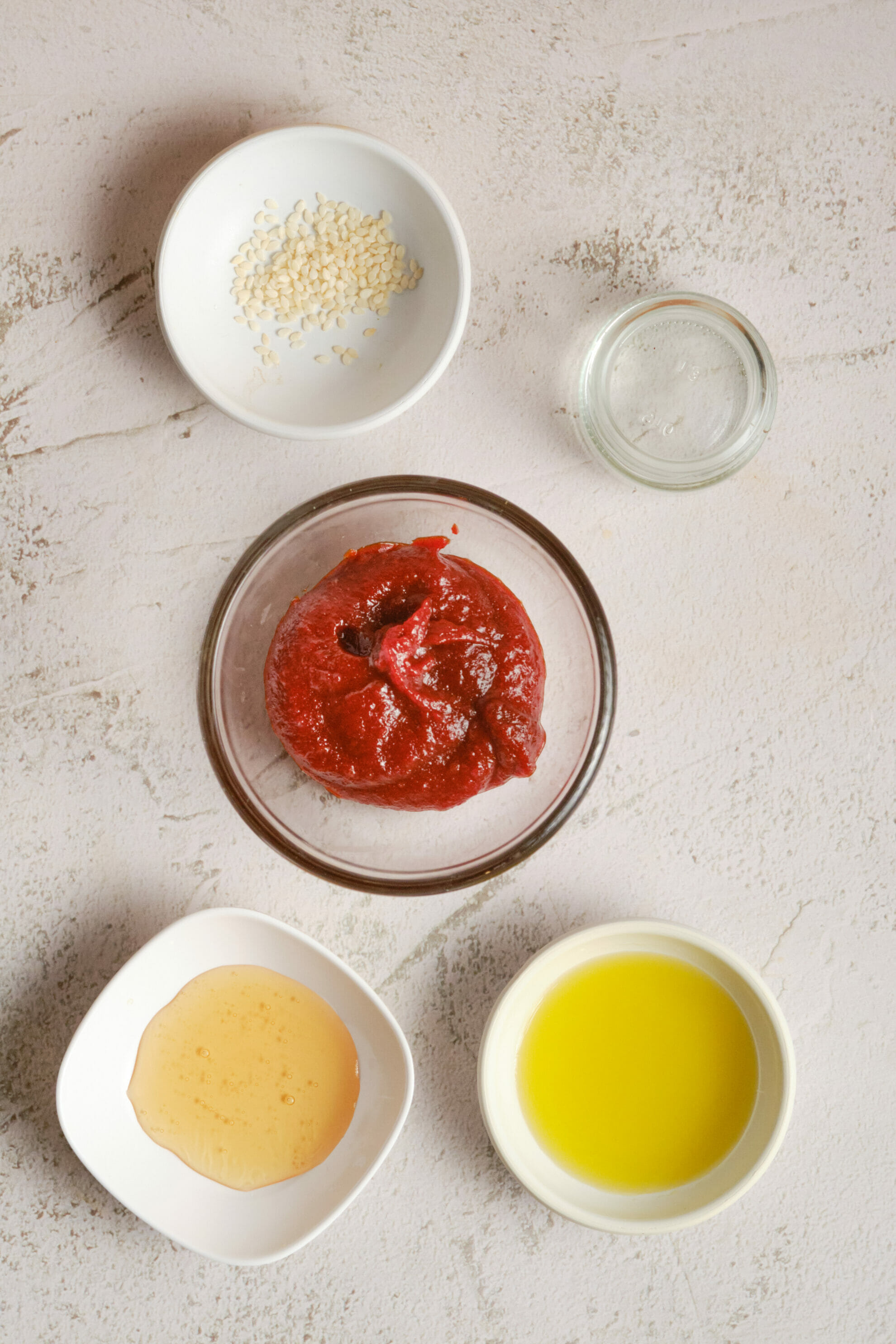
INSTRUCTIONS
Add
In a small bowl, add the gochujang paste, rice vinegar, sesame oil, and honey or maple syrup.
Whisk
Whisk well until combined.
Top
Transfer the gochujang sauce to a bowl and top with toasted sesame seeds. Serve this sauce alongside bibimbap.
DEVOUR!
Variations
- You can add or combine different ingredients to customize the flavor in this sauce. For instance, fresh citrus sauce, like lime or orange, will bring a zesty twist.
- You can also substitute the rice vinegar with apple cider vinegar.
- Add some chopped garlic to the gochujang sauce for an aromatic kick.
What Can i use gochujang sauce for?
Almost anything! It can be a dip, a dressing, a sauce, or a marinade. Here are some recipes to consider:
Bibimbap Recipe (Korean Mixed Rice): Bibimbap and gochujang sauce go hand in hand so I don’t doubt your first time making this sauce will be in tandem with this savory rice dish.
Juicy Grilled Chicken Breast: Want to brighten up that chicken? Try marinating it in gochujang sauce for a bit of Korean flair.
Grilled Avocados: Though this recipe calls for feta tahini sauce, you can forgo that and use gochujang sauce instead.
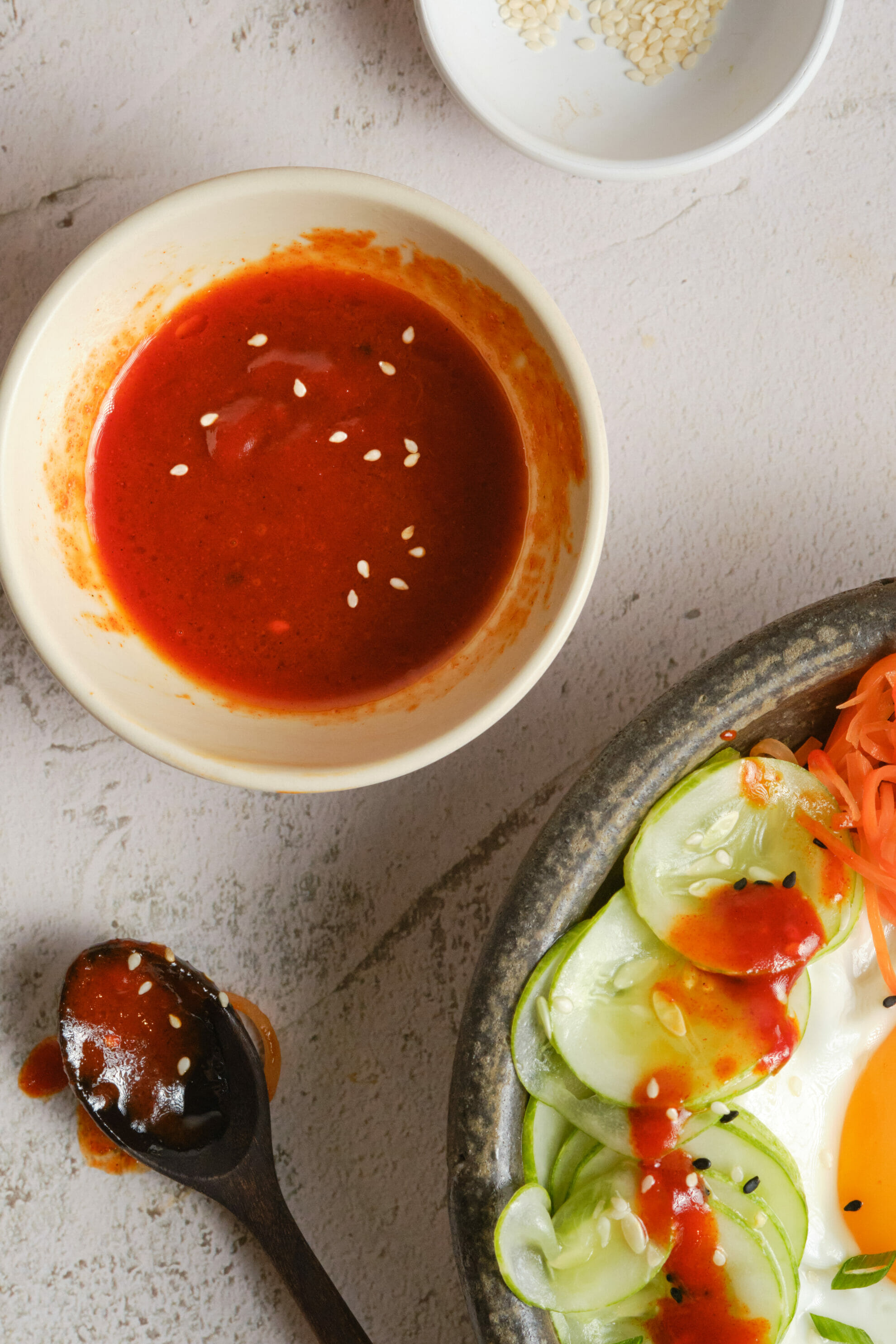
FAQs
You can dilute it with water, broth, or vinegar. Or you can neutralize the spice with the addition of a cream like yogurt, coconut milk, or sour cream. Naturally, this will affect the taste (probably in a good way… that coconut-milk addition sounds really good!). You can also add some sweetness to the sauce in the form of honey or maple syrup, which should take attention away from the spice.
Those larger grocery stores with an aisle dedicated to ethnic foods should have the paste. If not, a Korean grocery store will surely have it.
You could try swapping the gochujang paste for another chili paste like Thai red curry paste or Sriracha, but it won’t have that same one-of-a-kind Gochujang Sauce flavor.
Gochujang sauce is mostly vegan friendly if you use maple syrup instead of honey, but if you’re using store-bought paste or sauce, check the label for any animal ingredients the manufacturer tried to sneak in there.
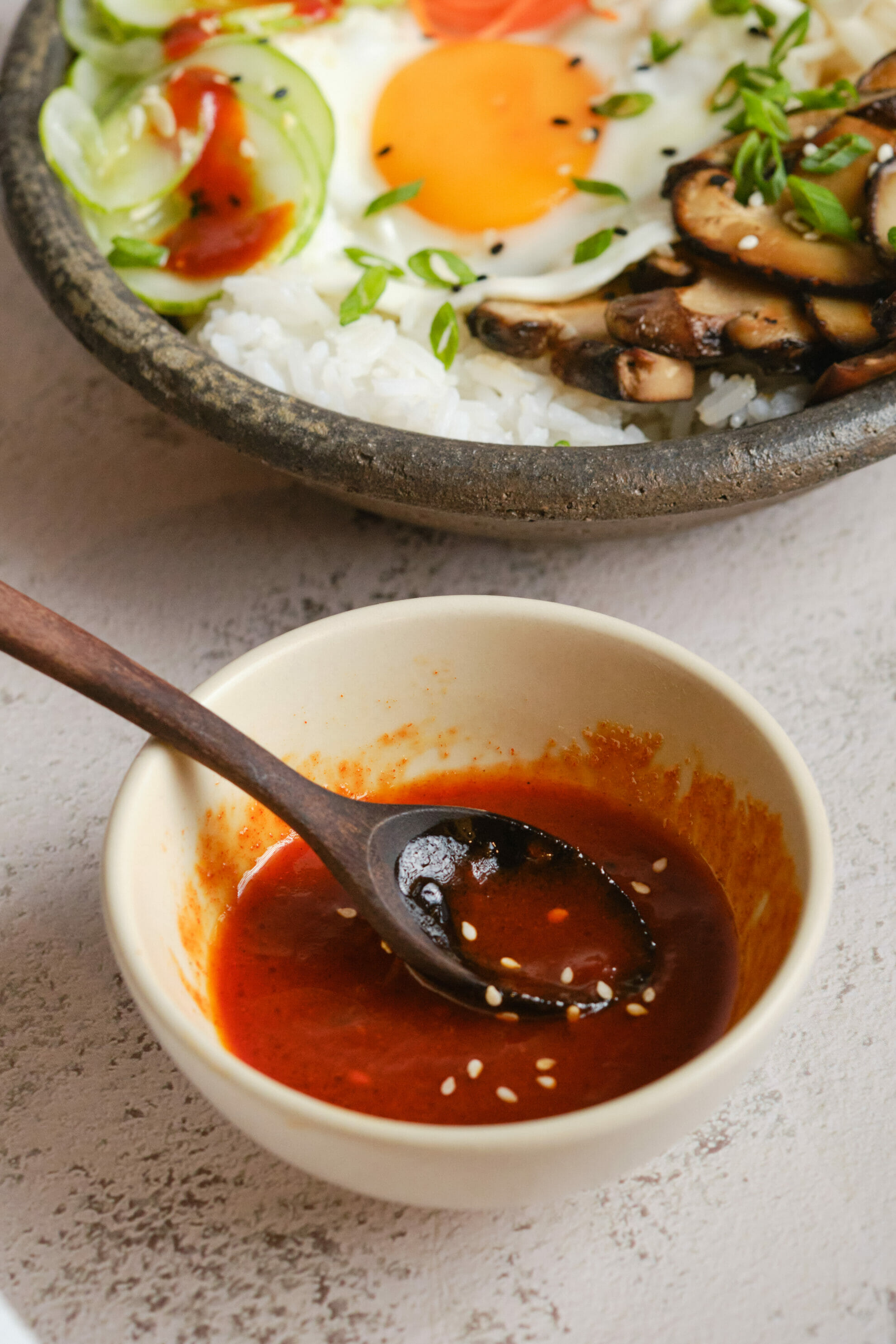
How to Store gochujang Sauce
Once made, put the gochujang sauce in an airtight glass or BPA-free plastic container. Put it in the fridge, where it should stay fresh for up to 3 weeks. You can also freeze gochujang sauce for up to 3 months in a freezer-safe container with some extra room for expansion.
When you’re ready to dig in, let it thaw in the fridge overnight or at room temp for a few hours. If your sauce has thickened, you can thin it out with a little water or rice vinegar to get the consistency just right.
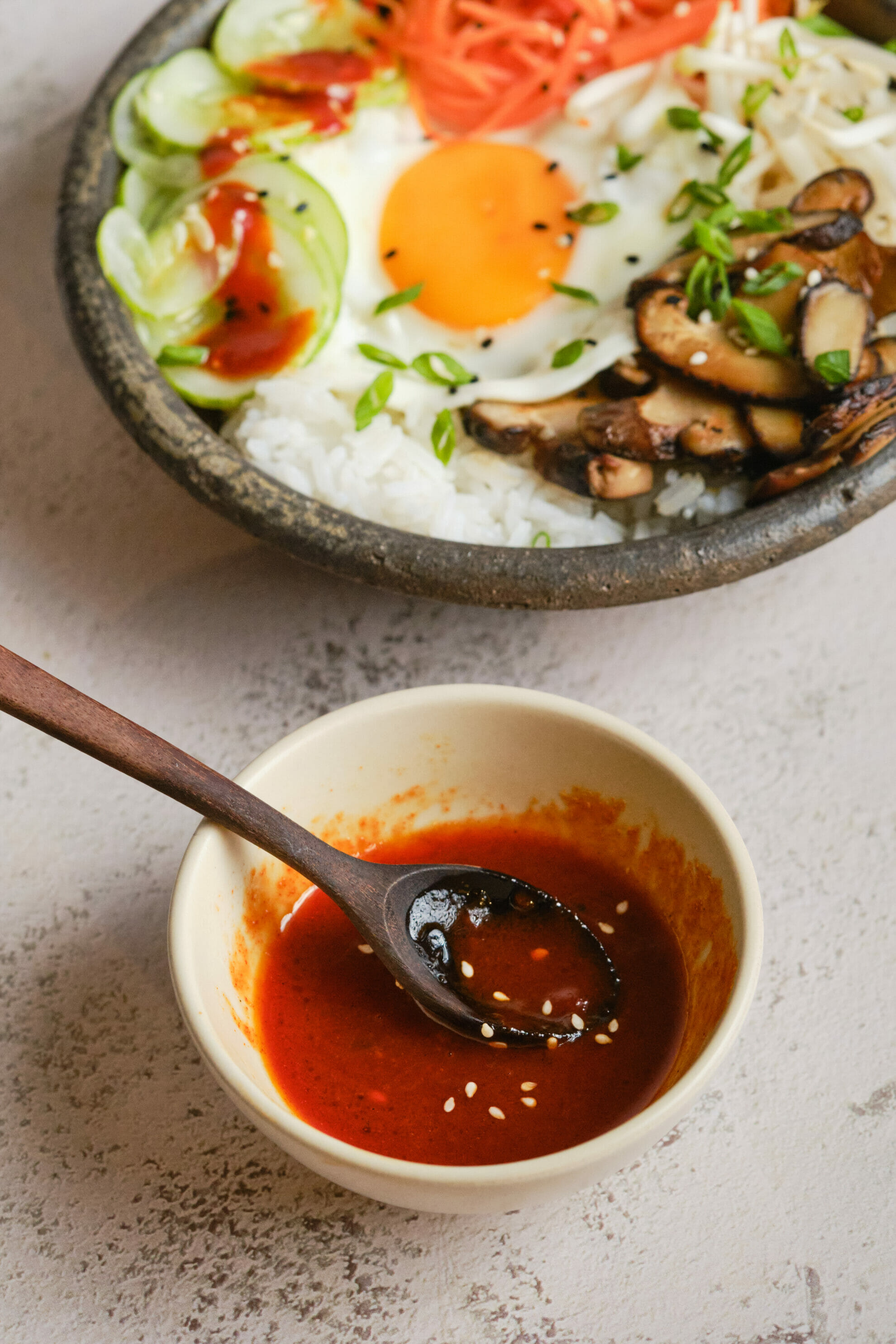
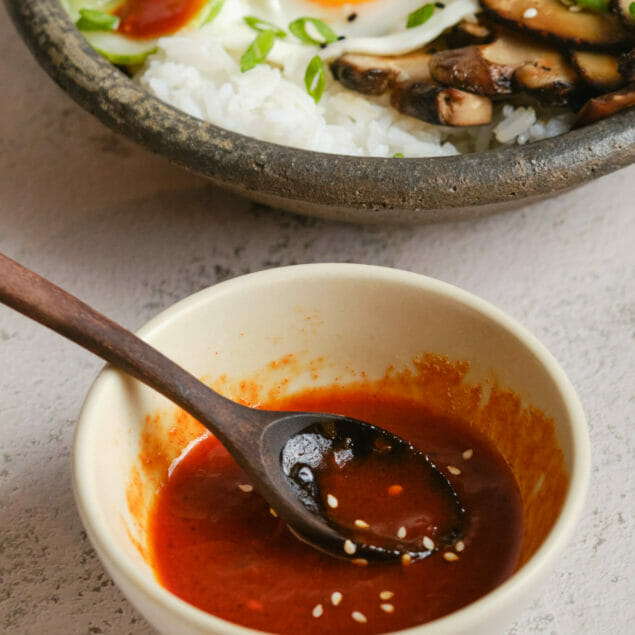
Easy Gochujang Sauce Recipe (Bibimbap Sauce)
Ingredients
- 2 tbsp gochujang paste
- 1 tbsp rice vinegar
- 1 tbsp sesame oil
- 1 tbsp honey or maple syrup
- white sesame seeds for topping
Instructions
-
In a small bowl, add the gochujang paste, rice vinegar, sesame oil, and honey or maple syrup.
-
Whisk well until combined.
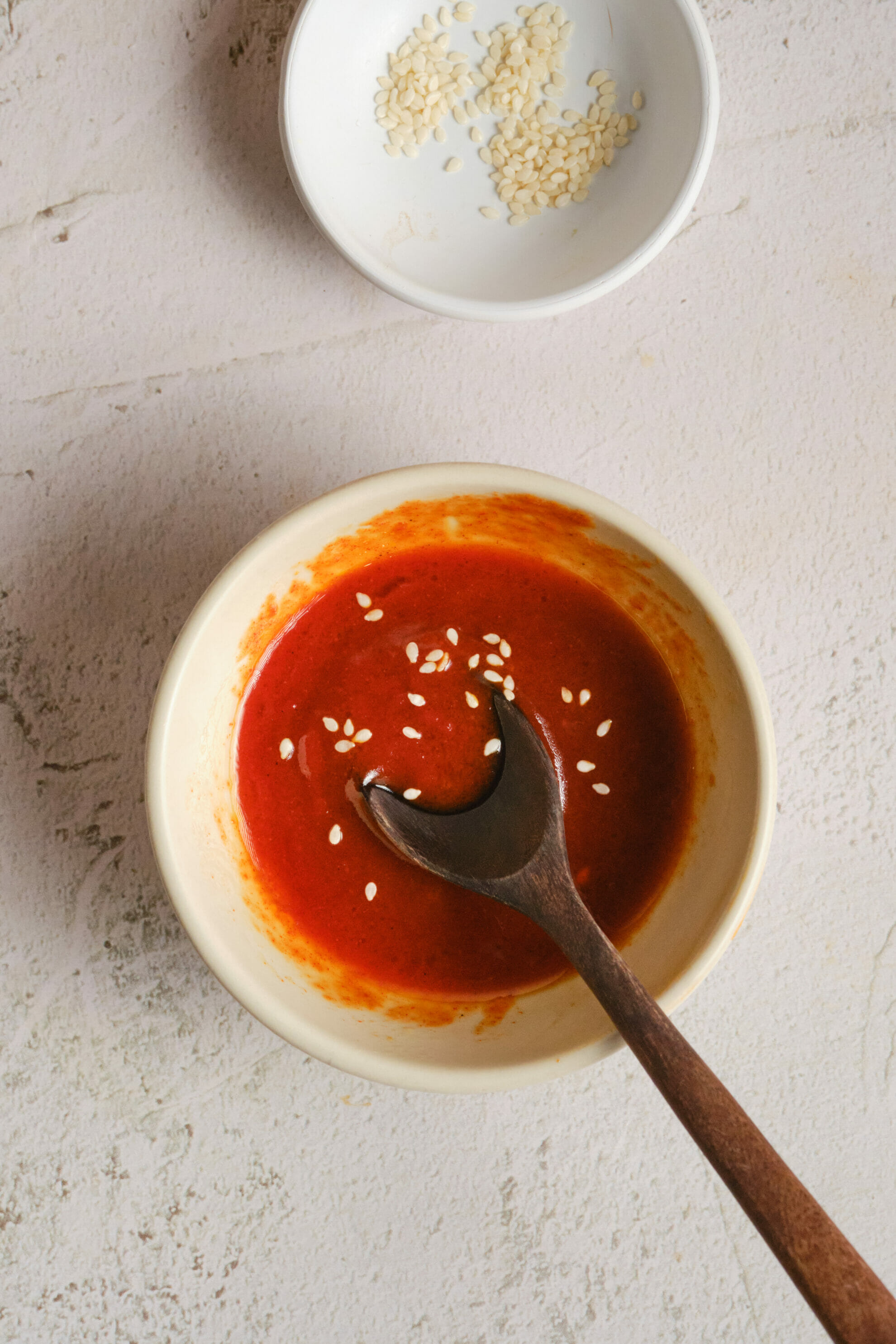
-
Transfer the gochujang sauce to a bowl and top with toasted sesame seeds. Serve this sauce alongside bibimbap.
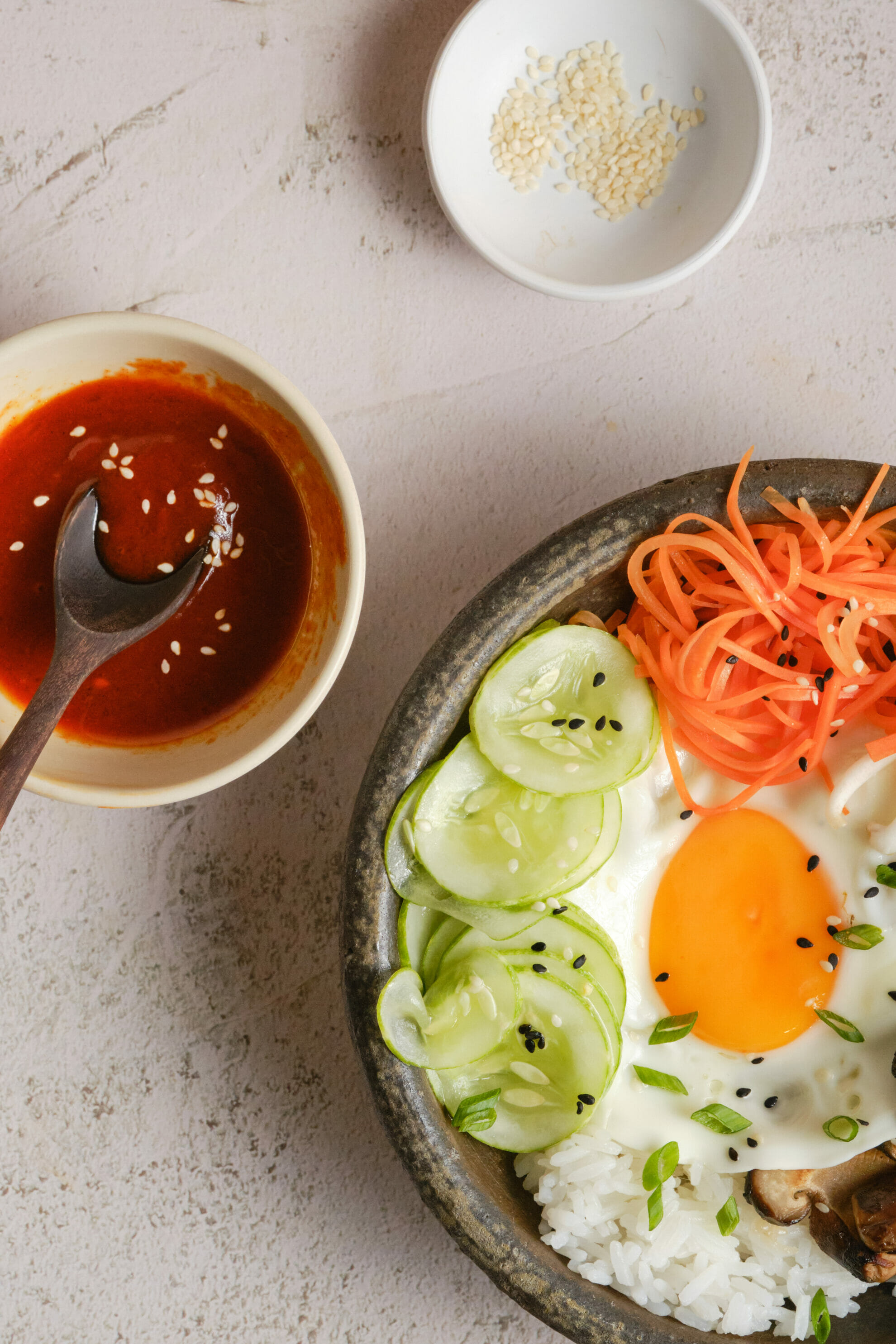
Notes
Nutrition
The post Easy Gochujang Sauce Recipe (Bibimbap Sauce) appeared first on Food Faith Fitness.

